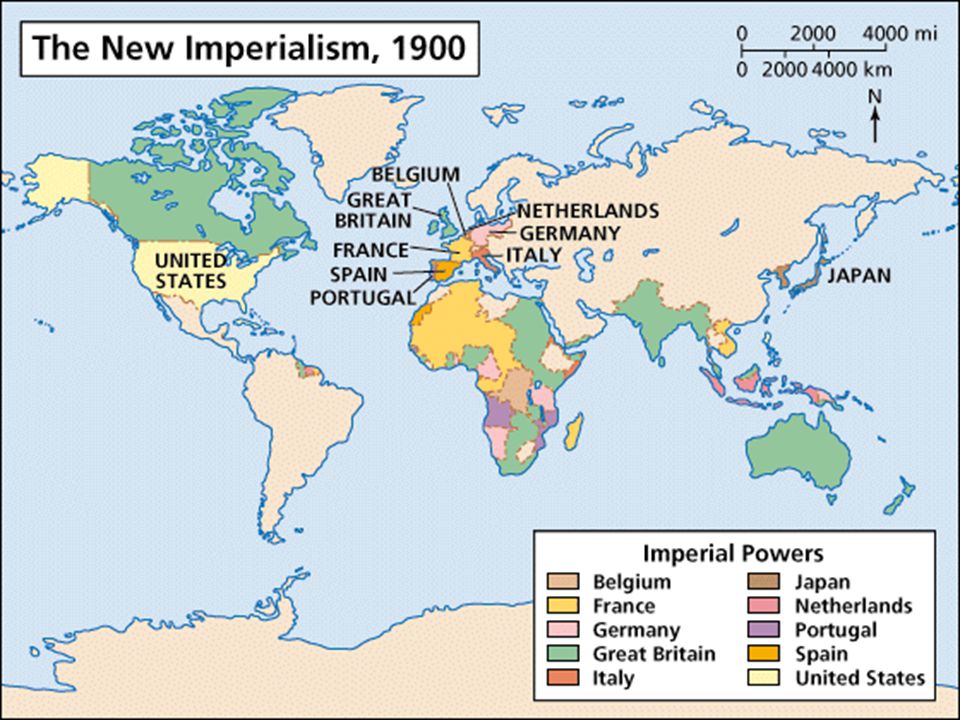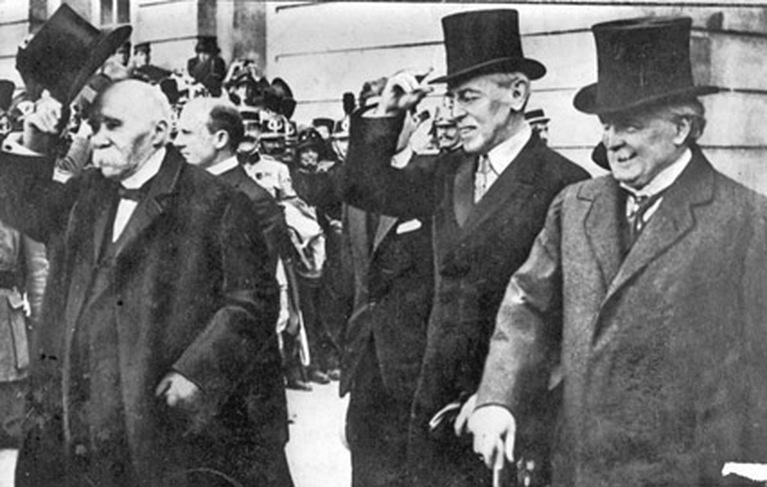World War I (also called The First World War, or The Great War) lasted from 1914-1919 and directly resulted in at least 15 million deaths, including over 9 million military personnel. The main protagonists were European powers, but due to their influence fighting extended outside Europe’s borders.
Build-Up: Imperialism

For many years the major European powers – The UK, France, Spain, Germany, Austria-Hungary and Russia – had been expanding. This created a race for new territory and influence.
Countries, most noticeably the UK and Germany, began to spend more money on the military. It is estimated that military spending increased by 50% in Europe between 1908 and 1913.
To attempt to control this race to power many of the countries created alliances with each other.
Alliances

A series of alliances was made:
- The Holy Alliance: Prussia, Russia, Austria
- League of the Three Empires: Germany, Austria-Hungary, Russia (Russia later left, leaving Germany and Austria-Hungary in the Dual Alliance)
- The Triple Alliance: Germany, Austria-Hungary, Italy
- Franco-Russian Alliance: France, Russia
- Entente Cordial: France, the UK
- Anglo-Russian Convention: the UK, Russia (*although not official, The UK, France and Russia were basically allied in ‘The Triple Entente’)
Problems in Eastern Europe
As the Ottoman Empire died and countries in Eastern Europe began to reach for power, the area became very unstable. There were two Balkan Wars (involving Bulgaria, Serbia, Montenegro, and Greece), while Austria-Hungary and Russia became politically involved.
The Spark, and Ultimatums

On June 14th 1914 the heir to the Austria-Hungary throne, Archduke Franz Ferdinand, was assassinated in Serbia. Austria-Hungary sent an ultimatum to Serbia.
Within weeks countries were forced to fulfill their alliances.
World War I is often seen as a ‘house of cards’. Gavrilo Princip, the assassin who killed the archduke, is known by some as the man who started a world war.
War Begins
Austria-Hungary attempted to invade Serbia. The Serbs kept them out.
Meanwhile Germany – who had an alliance with Austria-Hungary – worried about an attack on them from France to the west and Russia to the east. They attacked France first. Russia did attack from the east.

A Global War
Imperialism meant that the main European countries had armies and influence all over the world. These areas began to fight as well.
Examples of this:
- New Zealand, part of the British Empire, took German Samoa.
- Japan aided the Allies in taking German areas in China.
- British, French and German armies fought in Africa, where each country had been expanding.
- India, part of the British Empire, aided the Allies.
Life in the Trenches

Life for soldiers in the trenches was miserable. As well as fear of being killed by the enemy, the squalid and wet conditions brought disease, including cholera and trench foot, and rat infestations. There were also long hours of incredible boredom when no action or advancement occurred.
The trenches themselves were dug not only by soldiers, but by a mass of Chinese labourers brought across by the British and French.

Between the trenches of the two opposing armies lay an area called ‘no man’s land’. These strips of land, outside a soldier’s own protection and facing the enemy’s weapons, were perhaps the most dangerous pieces of ground during the war. However, for troops to make any sort of progress they needed to cross no man’s land and break through enemy lines and defences. The order to go ‘over the top’ was one of the most feared as, despite support from planes and guns, many soldiers knew their chance of dying was high.
While trench warfare is the memorable image of World War I, most people involved in the conflict did not serve there. The trenches were the front line, behind which masses of people had other jobs, while countries’ air forces and navies were also greatly involved.
New Weapons and a Large Death Toll

Technology had greatly advanced the effectiveness of weapons. The machine gun made defending territory far easier. At the beginning of the war military tactics did not know how to beat the machine gun, leading to trench warfare, slow progress, and a high death toll.,
Later in the war gas and tanks were introduced. Submarines were used by the navies.

The rise of technology meant killing people was easier than ever before. World War I became the bloodiest war in history:
- The Brusilov Offensive resulted in 1.6 million deaths.
- The Battle of the Somme lead to the death of over 1 million men.
- Over a million died in three battles at Ypres.
- Nearly a million died at Verdun.
- Half a million died at Gallipoli.
Families of those killed in battle were generally sent a telegram or letter announcing the news, although in some cases the news was passed on in person by a member of the unit. Unsurprisingly, the arrival of a messenger with a telegram became one of the most feared sights for families of soldiers.
Other Casualties

Many of those who avoided death during the war were left disabled. It is estimated that amongst Britain’s forces alone 2 million soldiers had some form of disability, and 40 000 had to have limbs amputated. The French brought back a form of the guillotine for amputation purposes. Shellshock and other forms of psychological damage were widely reported.

Around 7-10 million people were taken prisoner during World War I. Prison camps varied depending on location, official rank, and the captor’s intentions: whereas some prisoners were simply to be held, others were to be punished or put to work. Although the Hague Conventions of 1899 and 1907 established rules about how to treat prisoners in terms of accommodation and food, the reality was that feeding one’s soldiers and citizens came above looking after prisoners.
Britain was probably the first country to put together ‘concentration camps’, being places were mass groups were held without trial. Unlike prison camps, concentration camps were used to round up and detain sections of society that were deemed opponents or suspicious. This idea would later be infamously used by Nazi Germany in World War II, who used concentration camps in conjunction with extermination camps.
America Joins and Russia Withdraws

For two and a half years America had been trying to be neutral. It had been selling weapons and earning money. But British and German boats were interfering, taking shipments and sinking boats. America joined the war in April 1917, joining the Allies.
Problems at home – disillusionment with the war and Royal Family – meant Russia underwent a revolution. The new Bolshevik leader, Lenin, withdrew from the war in early 1918.
The End of the War

The Germans were beginning to lose the war. A Spring Offensive had resulted in many casualties but no progress. The Allies fought back with their own offensive. More and more Germans were taken hostage. Knowing the war could not be won, Austria-Hungary asked for a truce on November 3rd 1918. On November 11th, at 11am (the eleventh hour of the eleventh day of the eleventh month) Germany signed an armistice.
The Treaty of Versailles was signed on June 28 1919, officially ending the war. Germany and its partners were made to take full responsibility for the conflict and to pay reparations equal to over $31 billion dollars – a fee, at that time, Germany could not afford. This bankrupting of Germany is seen by many as the instigator for the rise of Germany’s nationalist far right, which would bring about World War II only twenty years later.